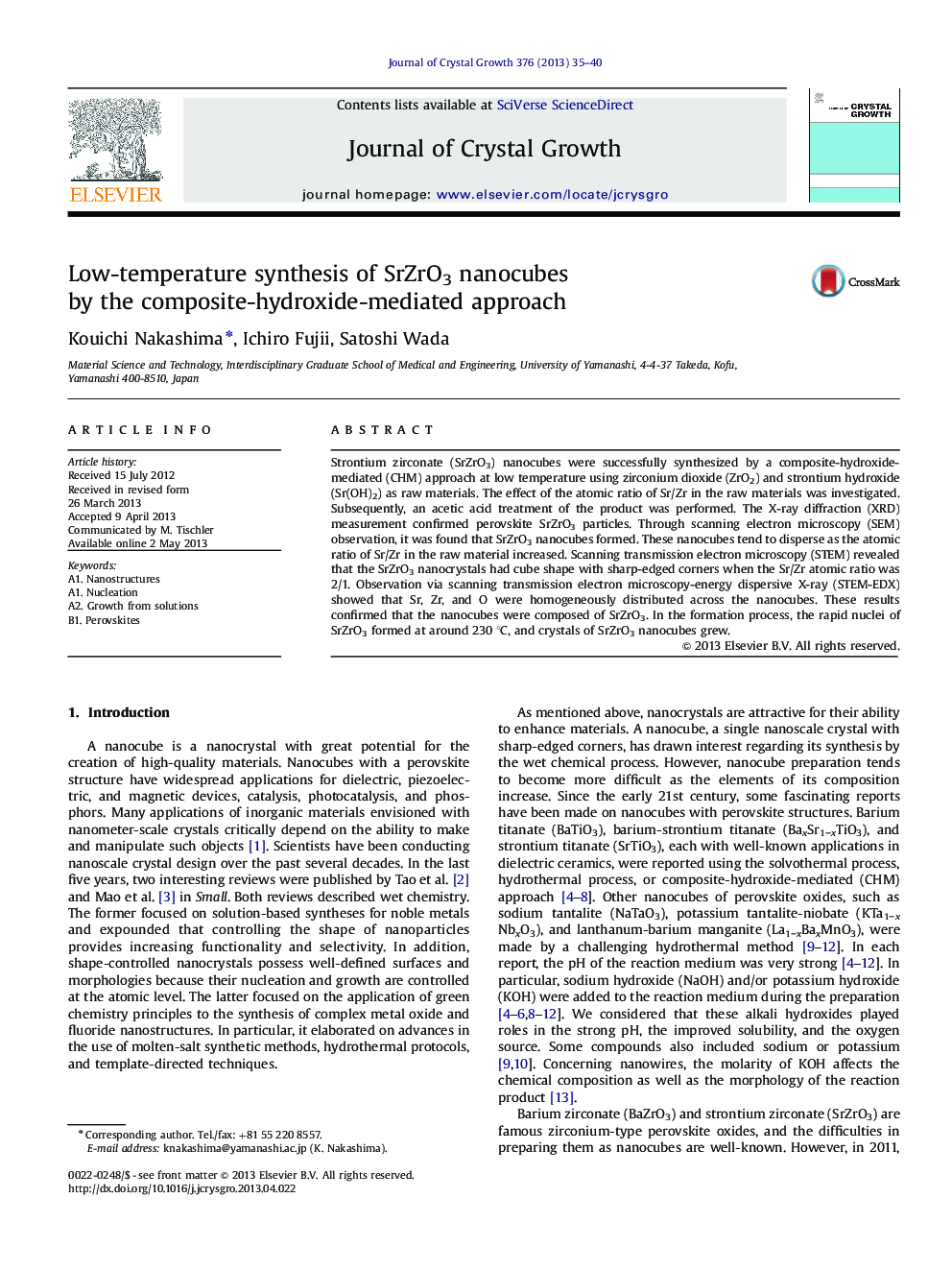| Article ID | Journal | Published Year | Pages | File Type |
|---|---|---|---|---|
| 1790891 | Journal of Crystal Growth | 2013 | 6 Pages |
•SrZrO3 nanocubes were successfully synthesized by a CHM approach at low temperature.•STEM revealed that the SrZrO3 nanocrystals had cube shape with sharp-edged corners.•STEM-EDX showed that Sr, Zr, and O were homogeneously distributed across the nanocubes.•The rapid nuclei of SrZrO3 formed at around 230 °C, and crystals of SrZrO3 nanocubes grew.
Strontium zirconate (SrZrO3) nanocubes were successfully synthesized by a composite-hydroxide-mediated (CHM) approach at low temperature using zirconium dioxide (ZrO2) and strontium hydroxide (Sr(OH)2) as raw materials. The effect of the atomic ratio of Sr/Zr in the raw materials was investigated. Subsequently, an acetic acid treatment of the product was performed. The X-ray diffraction (XRD) measurement confirmed perovskite SrZrO3 particles. Through scanning electron microscopy (SEM) observation, it was found that SrZrO3 nanocubes formed. These nanocubes tend to disperse as the atomic ratio of Sr/Zr in the raw material increased. Scanning transmission electron microscopy (STEM) revealed that the SrZrO3 nanocrystals had cube shape with sharp-edged corners when the Sr/Zr atomic ratio was 2/1. Observation via scanning transmission electron microscopy-energy dispersive X-ray (STEM-EDX) showed that Sr, Zr, and O were homogeneously distributed across the nanocubes. These results confirmed that the nanocubes were composed of SrZrO3. In the formation process, the rapid nuclei of SrZrO3 formed at around 230 °C, and crystals of SrZrO3 nanocubes grew.
